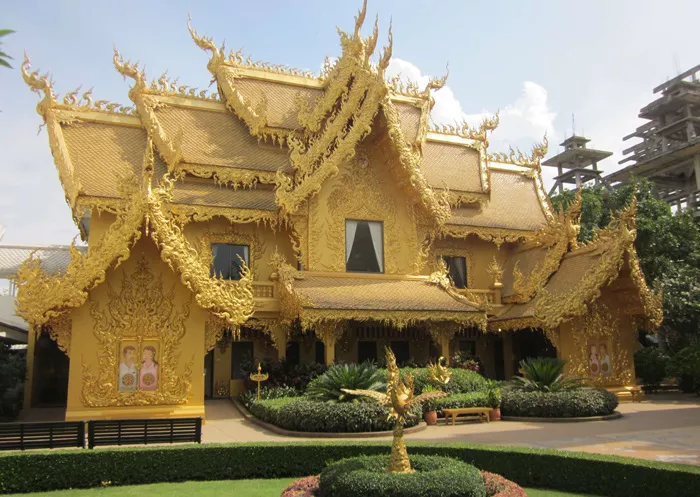Buddhist architecture is more than just physical structures; it is a spiritual language that embodies the core teachings of Buddhism. Rooted in the 5th century BCE in India, these designs emerged to support meditation, worship, and monastic life. From the earliest stupas to modern temples, each element carries symbolic meaning, guiding believers on their journey to enlightenment.
Historical Origins and Evolution
The origins of Buddhist architecture can be traced back to the life of Siddhartha Gautama, the Buddha. After his enlightenment, his followers built simple mounds called stupas to house his relics and ashes. These early structures, such as the Sanchi Stupa in India, evolved over centuries, incorporating intricate carvings and architectural features that reflected the growing complexity of Buddhist philosophy. Emperor Ashoka’s patronage in the 3rd century BCE played a pivotal role in spreading these designs across Asia, influencing countries like China, Japan, and Thailand.
Core Principles and Symbolism
Buddhist architecture is built on principles of harmony, simplicity, and connection with nature. Structures are designed to create a serene environment that fosters mindfulness and spiritual growth. Key symbols like the lotus flower (purity), the Dharma wheel (teachings), and the bodhi tree (enlightenment) are integrated into designs, serving as visual reminders of Buddhist teachings.
Key Types of Buddhist Architecture
Buddhist architecture encompasses various structures, each with a unique purpose and design. Here are the main types:
Stupas: Symbols of Enlightenment
Stupas are dome-shaped structures that originally housed relics of the Buddha or revered monks. They symbolize the Buddha’s enlightenment and the path to nirvana. The design of a stupa includes a circular base (earth), a hemispherical dome (water), a square harmika (air), and a spire (fire), representing the five elements of the universe. Examples include the Shwedagon Pagoda in Myanmar and the Borobudur Temple in Indonesia.
Viharas: Monastic Communities
Viharas are monasteries where monks live, study, and meditate. These complexes typically include living quarters, meditation halls, and libraries. The Ajanta Caves in India are a famous example of rock-cut viharas, featuring intricate carvings and murals that depict scenes from the Buddha’s life.
Chaityas: Prayer Halls
Chaityas are prayer halls that often contain a stupa at one end. These structures are characterized by their apsidal (semi-circular) design and large windows that allow natural light to illuminate the stupa. The Karla Caves in India are a well-known example of a chaitya hall.
Pagodas: Spiritual Ascent
Pagodas are multi-tiered towers found in East Asia. They evolved from Indian stupas and are often used to house relics or sacred texts. The number of tiers varies, but they typically symbolize the stages of spiritual growth. Examples include the Horyuji Pagoda in Japan and the Giant Wild Goose Pagoda in China.
Regional Variations in Buddhist Architecture
Buddhist architecture has adapted to local cultures and traditions across Asia, resulting in distinct regional styles.
India: The Birthplace of Buddhist Architecture
India is home to some of the oldest Buddhist structures, including the Sanchi Stupa and the Mahabodhi Temple in Bodh Gaya. These sites feature elaborate carvings and sculptures that depict Buddhist narratives and symbols.
Southeast Asia: Ornate and Colorful Designs
Southeast Asian countries like Thailand, Myanmar, and Cambodia are known for their ornate temples and pagodas. The Angkor Wat in Cambodia, originally a Hindu temple, was later converted to Buddhism and features intricate bas-reliefs and towering spires.
East Asia: Harmony with Nature
East Asian Buddhist architecture, seen in China, Japan, and Korea, emphasizes simplicity and harmony with nature. Zen temples in Japan, such as Ryoanji, feature minimalist designs and rock gardens that promote meditation. Chinese pagodas, like the Longhua Pagoda, are often built with wood and feature curved roofs.
Tibet: Sacred Mountains and Prayer Wheels
Tibetan Buddhist architecture is characterized by monasteries built on high mountain slopes, such as the Potala Palace in Lhasa. These structures incorporate prayer wheels, colorful murals, and chortens (stupas) that symbolize protection and enlightenment.
Spiritual Significance of Buddhist Architecture
Every element of Buddhist architecture is designed to support spiritual practice and understanding. The layout of temples and monasteries often follows a mandala design, symbolizing the universe and the path to enlightenment. The use of natural materials like wood, stone, and gold reflects Buddhist values of simplicity and purity.
Meditation and Contemplation
Architectural features like courtyards, gardens, and water bodies create peaceful environments for meditation. Zen gardens, for example, use carefully arranged rocks and gravel to represent mountains and rivers, encouraging mindfulness and reflection.
Symbolic Journey
The design of many Buddhist structures guides visitors on a symbolic journey. For instance, the Borobudur Temple in Indonesia features a series of platforms that spiral upwards, representing the journey from ignorance to enlightenment.
Modern Adaptations of Buddhist Architecture
In recent years, Buddhist architecture has evolved to meet the needs of contemporary society while maintaining its spiritual essence. Modern temples incorporate sustainable materials, minimalist designs, and community spaces. Examples include the Water-Moon Monastery in Taiwan, which features a lotus pond and a wooden wall carved with Buddhist scriptures, and the Metta Vihara Meditation Centre in Belgium, designed to promote mindfulness in a modern setting.
Conclusion
Buddhist architecture is a living testament to the enduring influence of Buddhist philosophy. From the ancient stupas of India to the modern temples of the West, these structures continue to inspire and guide believers on their spiritual journey. By combining symbolic design with practical functionality, Buddhist architecture creates spaces that foster enlightenment, compassion, and harmony.

